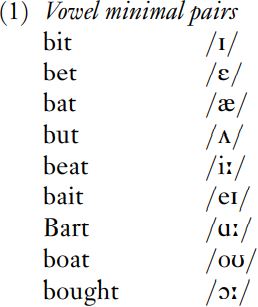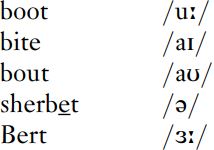

Grammar


Tenses


Present

Present Simple

Present Continuous

Present Perfect

Present Perfect Continuous


Past

Past Simple

Past Continuous

Past Perfect

Past Perfect Continuous


Future

Future Simple

Future Continuous

Future Perfect

Future Perfect Continuous


Parts Of Speech


Nouns

Countable and uncountable nouns

Verbal nouns

Singular and Plural nouns

Proper nouns

Nouns gender

Nouns definition

Concrete nouns

Abstract nouns

Common nouns

Collective nouns

Definition Of Nouns

Animate and Inanimate nouns

Nouns


Verbs

Stative and dynamic verbs

Finite and nonfinite verbs

To be verbs

Transitive and intransitive verbs

Auxiliary verbs

Modal verbs

Regular and irregular verbs

Action verbs

Verbs


Adverbs

Relative adverbs

Interrogative adverbs

Adverbs of time

Adverbs of place

Adverbs of reason

Adverbs of quantity

Adverbs of manner

Adverbs of frequency

Adverbs of affirmation

Adverbs


Adjectives

Quantitative adjective

Proper adjective

Possessive adjective

Numeral adjective

Interrogative adjective

Distributive adjective

Descriptive adjective

Demonstrative adjective


Pronouns

Subject pronoun

Relative pronoun

Reflexive pronoun

Reciprocal pronoun

Possessive pronoun

Personal pronoun

Interrogative pronoun

Indefinite pronoun

Emphatic pronoun

Distributive pronoun

Demonstrative pronoun

Pronouns


Pre Position


Preposition by function

Time preposition

Reason preposition

Possession preposition

Place preposition

Phrases preposition

Origin preposition

Measure preposition

Direction preposition

Contrast preposition

Agent preposition


Preposition by construction

Simple preposition

Phrase preposition

Double preposition

Compound preposition

prepositions


Conjunctions

Subordinating conjunction

Correlative conjunction

Coordinating conjunction

Conjunctive adverbs

conjunctions


Interjections

Express calling interjection

Phrases

Sentences


Grammar Rules

Passive and Active

Preference

Requests and offers

wishes

Be used to

Some and any

Could have done

Describing people

Giving advices

Possession

Comparative and superlative

Giving Reason

Making Suggestions

Apologizing

Forming questions

Since and for

Directions

Obligation

Adverbials

invitation

Articles

Imaginary condition

Zero conditional

First conditional

Second conditional

Third conditional

Reported speech

Demonstratives

Determiners


Linguistics

Phonetics

Phonology

Linguistics fields

Syntax

Morphology

Semantics

pragmatics

History

Writing

Grammar

Phonetics and Phonology

Semiotics


Reading Comprehension

Elementary

Intermediate

Advanced


Teaching Methods

Teaching Strategies

Assessment
Establishing vowel contrasts Minimal pairs
المؤلف:
April Mc Mahon
المصدر:
An introduction of English phonology
الجزء والصفحة:
79-7
18-3-2022
1541
Establishing vowel contrasts
Minimal pairs
Minimal pairs and the commutation test are the main tools available to the phonologist in ascertaining phonemic contrast among both consonants and vowels. A minimal pair list for SSBE vowels appears in (1).


The list above provides evidence for almost all phonemically contrastive vowels of SSBE, with a very small number of exceptions. Since schwa only appears in unstressed syllables, where most of the other vowels cannot appear, we must make do with near-minimal comparisons in this case, contrasting the second, unstressed syllable of sherbet with the various stressed syllables in (1). The short vowels /υ/ and /ɒ/, and the centring diphthongs, which were listed as SSBE vowels, do not appear in the selected context /b-t/; but the additional data in (2) shows that /υ/ and /ɒ/ on the one hand, and the three centring diphthongs on the other, contrast both with one another and with representative members of the list in (1). Phonemic contrast is a transitive relationship, meaning that if phoneme a contrasts with phoneme b, and phoneme b contrasts with phoneme c, then phonemes a and c also contrast: this means that if a contrast can be established between one of the ‘left-out’ vowels and any vowel in (1), then that vowel can be taken as contrasting with all the vowels in (1).

Sets of minimal pairs like this may work very well for one accent, but not for another. For instance, minimal pairs like lock /k/ versus loch /x/, or witch /w/ versus which  will be relevant for many Scottish speakers in establishing the voiceless velar and labial-velar fricative phonemes, but both members of the pairs will have /k/ and /w/ respectively in many other accents of English. Although this was a rather minor issue for consonants, it is much more important in discussing vowel phoneme systems, since as we shall see, most accent variation in English involves vowels.
will be relevant for many Scottish speakers in establishing the voiceless velar and labial-velar fricative phonemes, but both members of the pairs will have /k/ and /w/ respectively in many other accents of English. Although this was a rather minor issue for consonants, it is much more important in discussing vowel phoneme systems, since as we shall see, most accent variation in English involves vowels.
 الاكثر قراءة في Phonology
الاكثر قراءة في Phonology
 اخر الاخبار
اخر الاخبار
اخبار العتبة العباسية المقدسة

الآخبار الصحية















 قسم الشؤون الفكرية يصدر كتاباً يوثق تاريخ السدانة في العتبة العباسية المقدسة
قسم الشؤون الفكرية يصدر كتاباً يوثق تاريخ السدانة في العتبة العباسية المقدسة "المهمة".. إصدار قصصي يوثّق القصص الفائزة في مسابقة فتوى الدفاع المقدسة للقصة القصيرة
"المهمة".. إصدار قصصي يوثّق القصص الفائزة في مسابقة فتوى الدفاع المقدسة للقصة القصيرة (نوافذ).. إصدار أدبي يوثق القصص الفائزة في مسابقة الإمام العسكري (عليه السلام)
(نوافذ).. إصدار أدبي يوثق القصص الفائزة في مسابقة الإمام العسكري (عليه السلام)


















